The crypto and digital asset space can be intimidating to a newcomer, and the terminology certainly adds to that. Here, we’ll try to simplify the language and help make sense of a few of the most widely used terms: TradFi, CeFi, and DeFi.
A Quick TradFi, CeFi & DeFi Terminology Intro
Decentralized Finance, referred to as DeFi, is an emerging technology that is set to revolutionize the Traditional Finance – or TradFi – sector. Centralized Finance, CeFi, has emerged as the in-between of both worlds.
Financial institutions are recognizing that one of the biggest drivers of the growth of blockchain technology is DeFi. This new sector is seen as a major disruptor in their operating environment, but also increasingly as an opportunity, with most major financial institutions now forced to have divisions and teams devoted to crypto and digital asset strategy and innovation. Below, I will define the three different terms at a high level, review their differences, give examples, and review the pros and cons of each.
What is TradFi?
As briefly mentioned above, the term “TradFi” is short for traditional finance and, essentially, relates to conventional banks and financial institutions.
In ancient markets, people bartered for goods using shells or beads as a medium of exchange, where people come to a mutual agreement for exchange such as tomatoes for meat. As needs changed, precious metals such as gold and silver became the mode of exchange before we finally transitioned to the fiat money we’re all familiar with today. Fiat used to be backed by precious metals, but it was decoupled in 1971 by President Nixon, as precious metals were unsustainable to maintain for fast-growing economies. The use of fiat money proved that value is truly created by people’s perceptions and beliefs about its worth.
Since the industrial revolution, the Traditional Finance industry has remained the same, with trust being placed on intermediaries like bank brokers and custodians that handle everything that has to do with managing money.

TradFi Pros
- Tried and Tested Systems: It’s currently the largest, most familiar financial infrastructure
- Well-established with a long history
- TradFi has evolved slowly over the decades and has a documented history
- Variety of options in one place
- Ease of use
- Number of services available
- Delegation of work: Security and oversight
TradFi Cons
- Wide-ranging expensive fees
- Slow transaction times
- Inflationary currencies
- Little transparency into business practices and systemic risk (example: ‘08 crisis)
- Institutions decide how to use customer funds
- Poor alignment of economic incentives
- Largely inaccessible to large populations across the world
A few TradFi examples include Goldman Sachs, JP Morgan, Bank of America, Charles Schwab, Fidelity, and BNY Melon.
What is CeFi?
Centralized finance (CeFi) generally refers to financial applications that bridge the gap between Traditional Finance (TradFi) and modern financial applications. Over the years, the popularity and adoption of crypto and digital assets have increased exponentially. As everyday investors began to invest in crypto, companies are known as “exchanges” started offering crypto wallets where people could store their digital assets like a bank. These exchanges are currently the most popular way for people to keep their digital money and make digital asset transactions. These CeFi companies have a centralized, governing body in control of any funds. CeFi is an umbrella term that is applied to centralized crypto exchanges and custodians, though it could be argued that other payment providers and FinTech applications also fall into this category.
CeFi Pros
- Fiat gateway for investors to easily deposit and transact digital assets
- Simple to use and onboard with familiar features and systems akin to TradFi
- Delegation of Security Management
- More regulated than DeFi
- Lower trading fees for smaller trades than in DeFi
- Customer support team to provide any assistance
CeFi Cons
- Single-point-of-failure. (If a CEO or keyholder goes missing, funds could be locked and withdrawals suspended without notice.)
- Must trust intermediary with wallet and assets
- More of a copy of TradFi structure
- Less regulated then TradFi
- For-profit companies that charge higher fees than TradFi
- Low transparency into business practices
CeFi Examples include Coinbase, Gemini, BlockFi, Celsius, Binance, PayPal, Crypto.com, Robinhood, and Nexo.io.
What is DeFi?
DeFi, short for decentralized finance, is the latest step in the financial technological revolution. DeFi is powered by blockchain technology and, essentially, runs on a global network of nodes. These nodes can mathematically verify transactions and record them on the blockchain. DeFi is used to signify applications that function without any intermediaries, such as banks and brokerages. Run by smart contacts (computer codes that automatically execute according to conditions of contact), DeFi applications aim to fulfill the everyday financial services of TradFi and CeFi, but in a completely independent and transparent manner.
DeFi refers to every decentralized aspect of finance. From DeFi tokens themselves to borrowing and lending, to staking, flash loans, and stablecoins. Even in today’s modern world, approximately 1 in 3 people are unbanked. Furthermore, around two-thirds of this group have access to a smartphone and the internet. This means that millions and millions of people, for the first time, will have access to financial tools and instruments all from their handheld devices. DeFi can help struggling economies and protect people from their local inflationary currencies.
It is important to note that DeFi boasts decentralized governance across the board. Currently, this is far from the truth. While there are DeFi networks that are truly decentralized, the majority of decentralized finance networks are centralized and hope to move to decentralized governance. Perhaps, a more apt term would be “open finance.”

DeFi Pros
- Censorship-resistant and permissionless, promoting financial inclusion
- Faster, borderless operations 24/7/365
- Cheaper transactions than TradFi
- Stablecoins act as a hedge against local currency debasement
- Higher yields (but riskier)
- Accessible to everyone that has an internet connection without barriers or discrimination
- Trustless service; transactions can be confirmed independently by the user
- Lower fees through the reduction of intermediaries
- Encouraging innovation through monetary incentives for developing and participating.
DeFi Cons
- Very complex and difficult to understand: Hard to engage and get started
- Security: Responsibility for own private keys and securing network
- In the experimental phase: A higher risk
- Unregulated: All responsibility is on the user, with no recourse or protection if things go wrong
- No customer service or personalized support
- High Gas Fees (on Ethereum)
DeFi Examples include Aave, MakerDAO, Compound, Goldfinch, Bancor, Uniswap, Loopring, 1inch, Curve, and Maple Finance.
Final Thoughts on TradFi, CeFi & DeFi
Contrary to what many crypto believers think, there will be a melding of TradFi, CeFi, and DeFi. There is a need for builders in each space to innovate together and bring forth the next evolution of financial services and infrastructure. The longer-running trends of digitalization, globalization and declining trust in centralized institutions only help to accelerate TradFi’s need to innovate and create synergies with DeFi, which in turn helps the DeFi movement.
Efficiency, cost-effectiveness, and risk minimization are key considerations for TradFi when determining whether to adopt innovative technology. One clear benefit of the adoption of digital assets and blockchain technology is greater security and less risk, as the use of cryptography renders transactions more irreversible and reduces cyber-attack and money laundering risks, which have plagued banks in recent years. The biggest threat to this security is human error. This means falling for phishing emails, ransomware attacks, and poor password management. We wrote a security guide late last year so be sure to check that out here.
Competition between banks will likely spur greater DeFi adoption in the future. Smaller banks will start this process, as we have seen recently with the Swiss Sygnum Bank announcing the integration of the most popular DeFi protocols – Uniswap, Aave, Maker, Curve, 1inch, and Synthetix.
While the stakes are high for the integration of TradFi, CeFi, and DeFi, there are obvious benefits for all. It is an important bridge to build for the world of DeFi in its mission to foster greater inclusivity and accessibility for wealth generation.
Resources used in writing this article:











